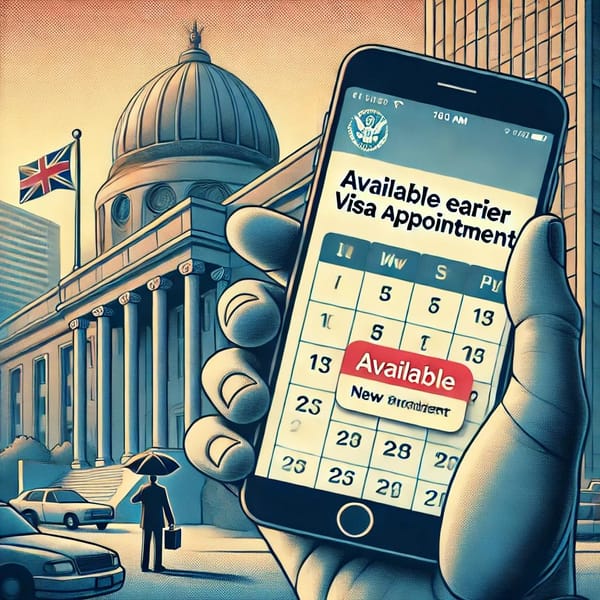Startup Idea: Enhancing Child Safety with a Wearable Device and Virtual Leash App
Discover how a wearable device connected to a smartphone app can provide parents with peace of mind by preventing their children from wandering off or being abducted.

Problem
Every parent's worst nightmare is losing sight of their child in a public place. According to the National Center for Missing and Exploited Children, approximately 800,000 children are reported missing each year in the United States alone. While most are found quickly, even a brief separation can cause immense stress and panic for both the child and the parent.
Key concerns include:
- Child Wandering: Young children are naturally curious and can easily stray away in crowded places like malls, parks, or events.
- Risk of Abduction: Although rare, the threat of kidnapping is a serious fear for parents.
- Lack of Immediate Awareness: Parents may not realize their child has wandered off until it's too late.
- Ineffective Communication: Young children may not know how to find their way back or communicate with strangers to get help.
Current Solutions
- Child Leashes and Harnesses: Physical leashes that keep the child tethered to the parent.
- GPS Tracking Devices: Wearable gadgets that allow parents to track their child's location via GPS.
- Smartphones and Smartwatches: Devices equipped with tracking apps and calling features.
- Identification Wristbands: Bands that contain contact information in case a child is found by a stranger.
Limitations of Current Solutions
- Child Leashes: Can be stigmatizing and uncomfortable for both the child and parent, leading to social judgment.
- GPS Devices: Often expensive, with recurring subscription fees for GPS services; may have limited battery life.
- Smartphones/Smartwatches: Not suitable for very young children; devices can be lost or removed.
- Identification Bands: Rely on a Good Samaritan to find and help the child, offering no preventive measures.
Market Overview
- Child Safety Market Size: The global child safety product market was valued at approximately $110 billion in 2022.
- Wearable Technology Growth: The wearable tech market is projected to reach $265 billion by 2026.
- Parental Spending: Parents in North America spend an average of $1,100 annually on child safety products.
- Potential User Base: With over 23 million children under the age of five in the U.S., the market for effective child safety solutions is substantial.
The Proposed Solution Experience
Introducing a Wearable Child Safety Device that connects to a Smartphone App via Bluetooth or Wi-Fi, creating a virtual leash that alerts parents when their child moves beyond a safe distance.
Key Features
- Wearable Device: A comfortable, child-friendly bracelet or clip-on that the child wears.
- Virtual Leash Technology: The app monitors the signal strength between the device and the parent's phone.
- Proximity Alerts: An alarm sounds on the parent's phone when the child moves beyond a predefined distance (e.g., 30 feet).
- Customizable Settings: Parents can adjust the safe distance and alarm sensitivity based on the environment.
- Two-Way Alerts: The wearable can emit a gentle vibration or light to alert the child if they stray too far.
- Offline Functionality: Works without the need for GPS or cellular data, preserving battery life and functioning indoors.
- Emergency Mode: If the connection is lost, the app records the last known signal strength and time to assist in locating the child.
- Secure Pairing: Uses encryption to prevent unauthorized connections or tracking.
User Flow
- Purchase and Setup: Parents buy the device and download the accompanying app.
- Pairing: Securely connect the wearable to the smartphone via Bluetooth or Wi-Fi.
- Customization: Set preferred proximity limits and alert types within the app.
- Daily Use: Child wears the device during outings; the app runs in the background.
- Alerts: If the child moves beyond the set distance, the parent receives an immediate alert.
- Reconnection: Upon reuniting, the device automatically reconnects without additional steps.
Monetization Ideas
- Product Sales: Revenue from the sale of the wearable devices, priced competitively (e.g., $49.99 per unit).
- App Purchase: A one-time fee or freemium model with basic features free and premium features unlocked with a $4.99 upgrade.
- Subscription Services:
- Basic Plan (Free): Standard features with limited customization.
- Premium Plan ($2.99/month): Advanced features like multiple device tracking, detailed activity logs, and priority customer support.
- Accessory Sales: Offer a range of wearables in different styles, colors, and designs to appeal to children.
- Data Insights: Provide anonymized data trends to child safety organizations (with user consent) to help improve public safety measures.
- Partnerships: Collaborate with retailers, amusement parks, and events to offer the device as part of their child safety protocols.
Competitive Advantages
- Non-Stigmatizing: Unlike physical leashes, the wearable is discreet and socially acceptable.
- Affordability: Lower cost compared to GPS devices with no recurring GPS subscription fees.
- Ease of Use: Simple setup with intuitive app interface; no technical expertise required.
- Indoor and Outdoor Use: Functions effectively in environments where GPS may fail, such as inside buildings.
- Battery Efficiency: Low energy consumption ensures long battery life for both the wearable and the smartphone.
- Immediate Alerts: Real-time notifications enable parents to react quickly before a situation escalates.
Conclusion
This innovative wearable device and app combination offer a practical solution to a significant concern for parents worldwide. By providing a virtual leash that alerts parents when their child strays too far, it enhances child safety without compromising comfort or social perception.
Keep Your Child Close, Even When They're Out of Sight
Ready to experience peace of mind during family outings? Discover our child safety wearable and take the first step toward enhanced security for your little ones.




